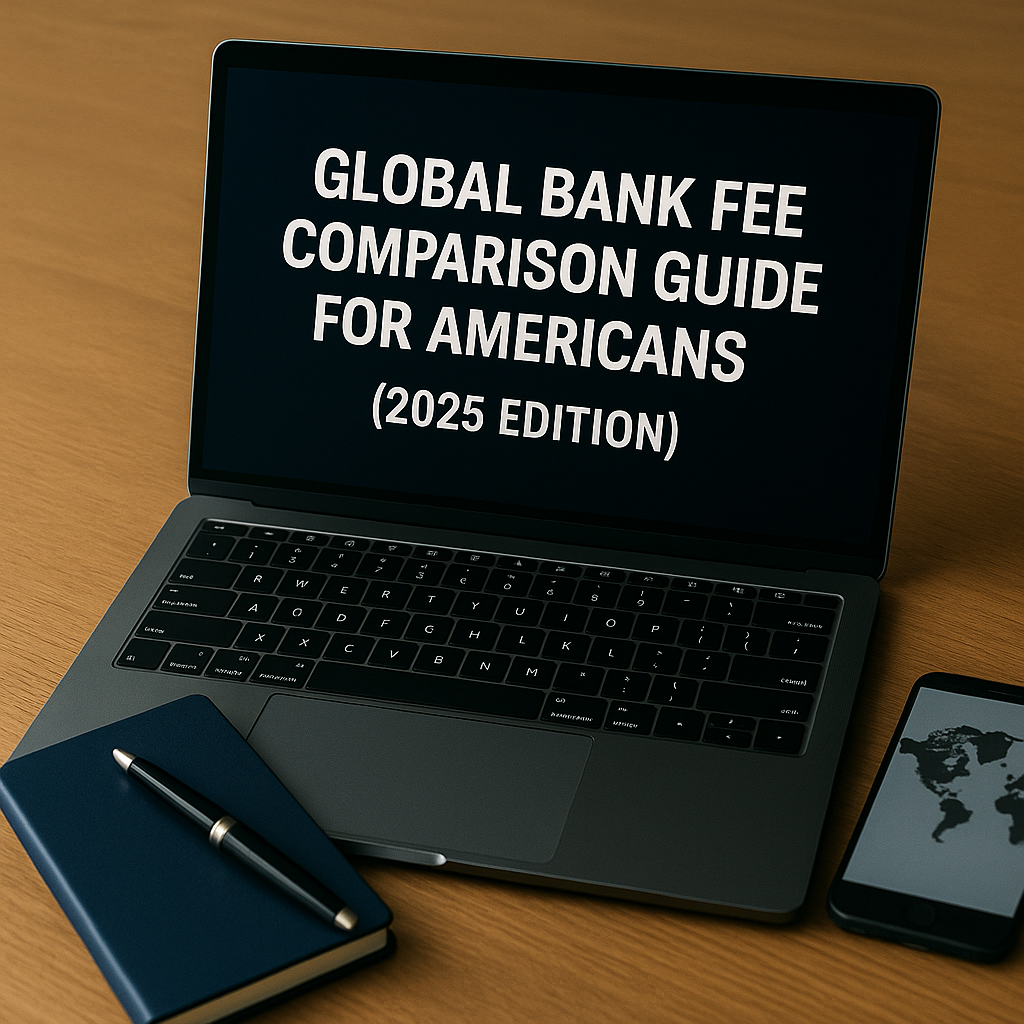Seamless Banking Solutions for a Global Life
Living abroad as an expat or digital nomad is exciting—but managing your money internationally? That’s where things get complicated.
Traditional banks often require a permanent address, in-person appointments, and mountains of paperwork. And worse: they may charge high fees for currency conversion, foreign ATM use, and even international transfers.
Enter digital banks.
In 2025, digital banks have become the essential tools for expats, freelancers, and remote professionals to manage, move, and protect their money globally—without borders.
This guide ranks the best digital banks for expats based on:
- Accessibility without local residency
- Multi-currency support
- Fees, user experience, and card functionality
- Country availability and expat-friendliness
Why Digital Banking Is Essential for Expats
Let’s be clear—expats face serious challenges when using traditional banks:
- Account opening may require utility bills or local credit history
- Funds held in local currency only
- International SWIFT transfers with delays and fees
- Difficult customer service in foreign languages
Digital banks solve most of these with:
Online-only sign-up
Multi-currency wallets
Borderless spending and transfers
Clear, low fees
Global card delivery
Top 6 Digital Banks for Expats in 2025
1. Wise (formerly TransferWise)
- Best for: Multi-currency accounts, international freelancers
- Features:
- Hold and convert 50+ currencies at real exchange rate
- Local account details (IBAN, sort code, routing number)
- Wise debit card accepted worldwide
- Fees: Ultra-low FX fee (~0.35–0.65%)
- Bonus: Integrates with Payoneer, Xero, and Stripe
2. Revolut
- Best for: Global spending, budgeting, travel perks
- Features:
- Hold 25+ currencies
- Free ATM withdrawals up to monthly limit
- Travel insurance and crypto integration
- Fees: Free for basic, low monthly fee for premium
- Bonus: Virtual cards + savings vaults + junior accounts
3. N26
- Best for: EU-based expats
- Features:
- German IBAN, slick mobile interface
- No FX fees on card payments
- Spaces for budgeting and saving
- Limitations: Requires EU address for full features
- Bonus: Strong EU deposit protection (up to €100,000)
4. Monzo
- Best for: UK expats and digital nomads
- Features:
- Instant spending notifications
- Categorized spending insights
- Travel-friendly Mastercard
- Limitations: Currently UK and limited overseas support
- Bonus: Excellent customer support and budgeting tools
5. Payoneer
- Best for: Getting paid from platforms and global clients
- Features:
- Receive local payments in USD, EUR, GBP, JPY
- Withdraw to local bank or use Payoneer card
- Works with Fiverr, Upwork, Airbnb, and more
- Fees: Moderate; varies by platform and withdrawal method
- Bonus: Global B2B payments in 200+ countries
6. Zolve
- Best for: Expats moving to the U.S. (especially from India)
- Features:
- U.S. bank account + credit card even before arrival
- No SSN required to open
- Zero FX fees on card spend
- Limitations: Currently limited to select nationalities
- Bonus: Ideal for students, H1B workers, and new arrivals
Comparison Table: Digital Banks for Expats (2025)
| Bank | Currencies | Card Support | FX Fees | Residency Needed | Best For |
|---|---|---|---|---|---|
| Wise | 50+ | Yes | 0.35–0.65% | No | Freelancers, multi-income users |
| Revolut | 25+ | Yes | Free up to limit | No | Travelers, budgeters |
| N26 | EUR only | Yes | None (in EUR) | Yes (EU) | EU residents, digital workers |
| Monzo | GBP | Yes | None (in GBP) | UK only | UK nomads |
| Payoneer | 8 | Yes | Platform-based | No | Global payments, platforms |
| Zolve | USD | Yes | 0% | No (pre-entry) | New U.S.-based expats |
Real-Life Scenario: Digital Banking in Action
Ana, a Brazilian graphic designer living in Spain, works with U.S. clients, gets paid via Payoneer in USD, holds funds in Wise, and spends in EUR using Revolut.
- She avoids currency conversion until rates are favorable
- Withdraws from Wise when needed
- Tracks spending and bills in Revolut’s budgeting dashboard
Result:
No traditional bank needed. No hidden fees. Full control.
Tips for Managing Digital Banking Like a Pro
- Always compare FX rates before converting
- Set up alerts for major currency moves
- Use budgeting features in Revolut or Monzo
- Keep one account for income, another for spending
- Avoid exceeding monthly ATM withdrawal limits
Common Mistakes Expats Make
Using only one bank for all needs
Ignoring country-specific regulations
Not tracking fees from platforms like Payoneer
Forgetting to update addresses or tax residency info
Not separating business and personal finances
Final Thought
In 2025, managing your finances across countries no longer requires local branches or paperwork.
With the right digital bank, you can:
- Earn and spend in multiple currencies
- Get paid like a local in different countries
- Travel, live, and work freely—without banking borders
You live globally—your bank should too.



